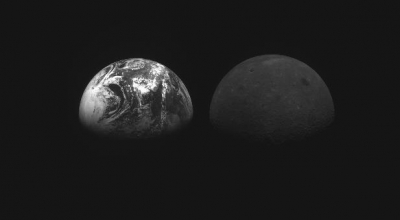S.Korea’s lunar orbiter Danuri enters Moon’s orbit after traveling 5.94 million kilometres so far

Seoul, Dec 28 : South Korea’s unmanned space vehicle Danuri has successfully entered the orbit of the Moon earlier than planned, the science ministry said on Wednesday.
Danuri, also known as the Korea Pathfinder Lunar Orbiter, was captured by the Moon’s gravity on Tuesday and began rotation, according to the Ministry of Science and ICT.
It was achieved after three rounds of lunar orbit insertion (LOI) maneuvers since the first one held on December 17, reports Yonhap news agency.
Danuri was scheduled to achieve the lunar orbit on Thursday after performing a total of five rounds of LOI maneuvers, the adjustment process for a space vehicle to lower its speed and commit itself to the gravity of the moon.
After travelling for 145 days from Earth, Danuri is now orbiting the moon at a speed of 1.62 kilometres per second in a regular two-hour cycle, the ministry said. It has 93 kgs of fuel left, enough to serve its yearlong mission next year.
The lunar orbiter will transform its system to the main operation mode next month to carry out its mission on the moon.
For the next year, the space vehicle will measure the terrain, magnetic strengths, gamma rays and other traits of the lunar surface using six onboard instruments during its yearlong mission starting in February. The orbiter will also identify potential landing sites for future lunar missions.
The science ministry said South Korea has become the world’s seventh country to send a lunar orbiter to the moon, achieving the feat 30 years after it developed its first satellite named KITSAT-1 in 1992 and 10 years after it started its moon exploration project in 2012.
“Based on research materials from Danuri, we will develop a new lunar lander in 2013 and launch it with our rocket,” Vice Minister Oh Tae-seog said in a press briefing. “In the long term, we will prepare projects to explore Mars.”
Danuri, South Korea’s first space mission beyond Earth’s orbit, was launched in August aboard a SpaceX Falcon 9 rocket from Cape Canaveral Space Force Station in the US state of Florida for South Korea’s first lunar mission. It has traveled a cumulative 5.94 million kilometres so far.






